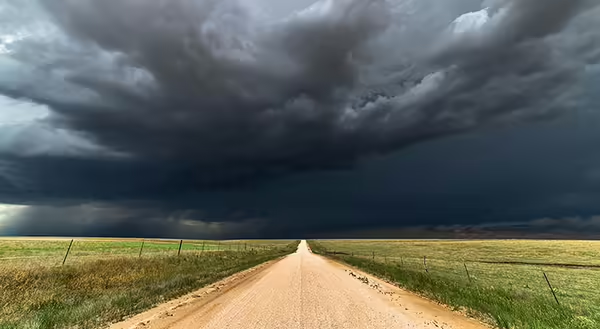
When I do weather talks, I usually get a question like, “Why do we see storms split apart and come back together after they pass by?”
Unfortunately, I must tell folks that most of the time, what they’re observing is all in the eyes of the beholder. If it were true from every location I have gotten this question, most people would see very few storms pass over!
It’s a matter of distance
Think of looking at a road that goes off in the distance. Does it appear to stay the same width? No, it appears to get narrower and come to a point. The same observations would be taking place with storms. The storms are separated, but that cannot be seen off in the distance. As the storms approach, the separation becomes visible, and the full separation is observed when the storms are close. As they pass by, they will appear to close together again the farther they move away.
The same occurs for radar
The farther the radar goes out, the less distinct the resolution. This next part comes from NOAA:
The radar beam spreads out approximately 1,000 feet for every 10 miles of travel, so at 120 miles from the radar, the beam is over 2 miles wide. This spreading of the beam impacts the resolution of the returned data. Small storm scale features that are easily seen close to the radar are often masked at long distances. This effect is also why “solid” lines of storms may appear to break up as they get closer to the radar. In reality, the line of storms may have never been continuous, but the radar was unable to resolve the gaps in the line.
Do storms ever really split?
Having said all this, in a few cases, storms do split. This will happen when the wind direction changes with height. The top of a thunderstorm will move with the upper air winds, while the lower part will be pushed by lower-level winds. This causes what is known as a left mover and a right mover. The left mover is usually moving northward, and it will weaken, while the right mover moves southerly and will strengthen. Remember that the split was caused by winds thousands of feet up and not by ground geography. Both storms begin to rotate when splitting, making them supercells. Also, once they split, they don’t come back together.
Bringing it all together
The main takeaways are that storms don’t split very often, and when they do, it’s not because of anything present on the very flat ground of the Midwest.
That doesn’t take anything away from your area being special! Now, I’ve got to split.
About the Blog
The All About Weather blog by Duane Friend explores the environment, climate, and weather topics for Illinois. Get in-depth information about things your weather app doesn't cover, from summer droughts to shifting weather patterns. Never miss a new post!